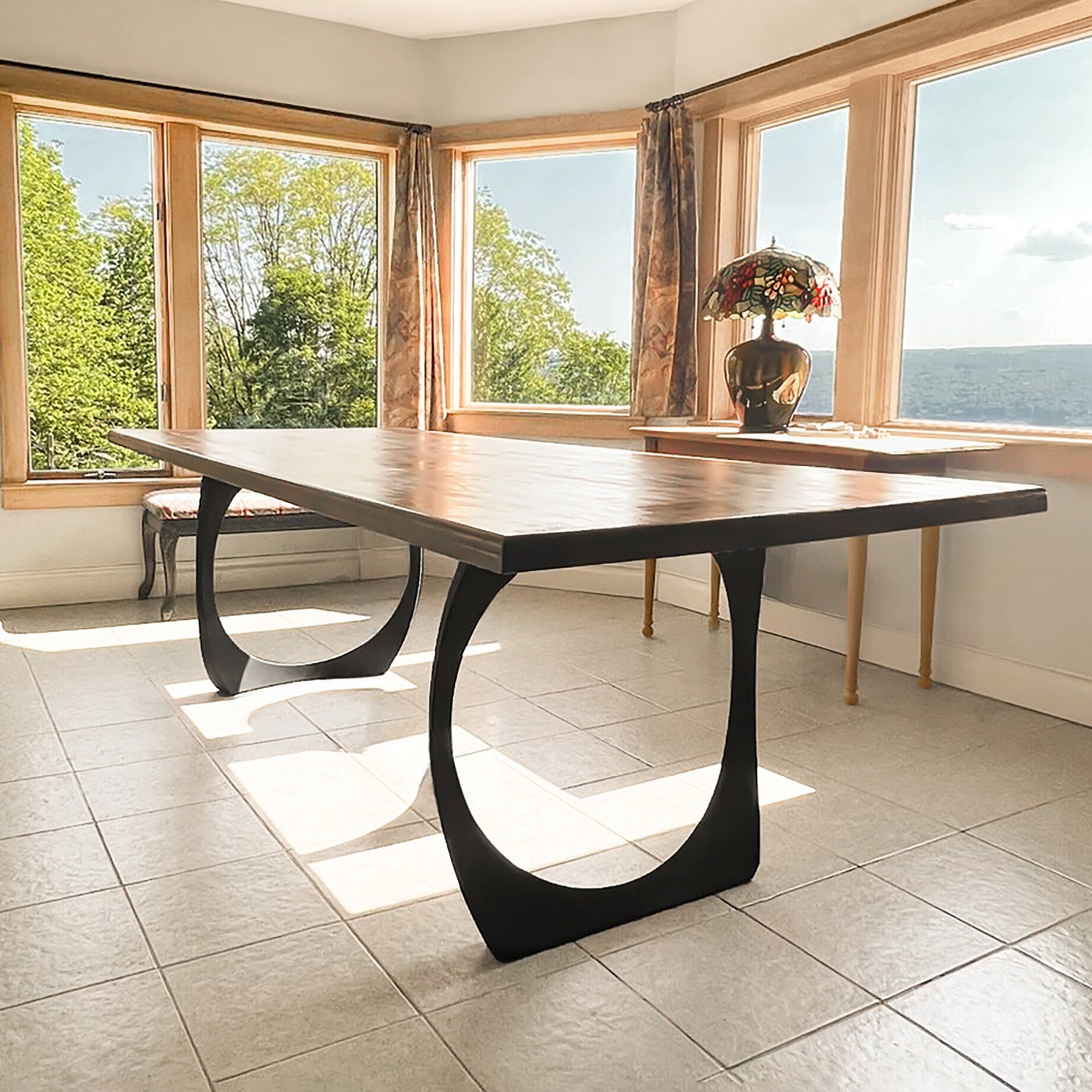Special Dining Room Table Legs to Change Your Dining Area
Special Dining Room Table Legs to Change Your Dining Area
Blog Article
A Comprehensive Check Out Table Leg Styles: Discovering the Suitable Suit
Picking the ideal table leg design is vital for both aesthetic charm and practical capability. Typical 4 legs provide classic sophistication and stability, while the stand base supplies enhanced legroom and a modern-day appearance. For those with larger tables, trestle legs make certain strong assistance, whereas barrette legs introduce a mid-century modern ambiance with their minimalist style. The x-shaped legs blend modern style with boosted stability. Each of these alternatives brings distinct advantages, making the option greater than just an issue of preference. Discover even more to uncover which style flawlessly complements your eating space and way of living.
Standard 4 Legs
Among the various types of eating table leg designs, the standard four-leg style remains an ageless selection for several households. 4 legs give well balanced support, guaranteeing the table continues to be secure and capable of birthing significant weight (dining room table legs).
From an aesthetic point of view, the standard four-leg layout can be quickly adapted to different indoor designs. Whether crafted from timber, steel, or a combination of products, these legs can be intricately carved, streamlined and minimalistic, or anything in between. Their versatility enables them to enhance both rustic and contemporary setups flawlessly.
Moreover, the uncomplicated framework of the four-leg layout facilitates ease of activity and positioning within a room. Unlike more complicated bases, this design lessens blockages, providing ample legroom for diners. In summary, the typical four-leg table leg style weds withstanding style with useful functionality, making it a sharp selection for those looking for both form and feature in their eating furnishings.
Stand Base
Typically commemorated for its elegant and space-efficient design, the pedestal base is a notable choice to the standard four-leg arrangement in dining table leg styles. Without edge legs, diners are paid for better flexibility of activity, making it a suitable option for round and oval tables that promote even more intimate and comprehensive events.
In addition, the pedestal base's main assistance can deal with significant weight, permitting the usage of heavier table tops, such as marble or thick hardwood. This strength combined with its aesthetic adaptability makes the stand base a popular choice in both traditional and modern indoor setups. It can perfectly integrate with numerous layout motifs, from traditional style to minimal modernity. Additionally, the central column itself uses a canvas for intricate layouts and artistic expressions, including an element of visual rate of interest underneath the table. In summary, the stand base integrates capability with style, making it a fine-tuned and useful choice for diverse eating settings.
Trestle Legs
Trestle legs provide a durable and timeless foundation for dining tables, identified by their straight cross-bracing and durable support beams. Originating from medieval times, this style has actually advanced yet retained its crucial structure, making it a perennial favorite in both conventional and contemporary setups. The main trestle beam of light, usually sustained by two or even more upright articles, provides extraordinary security, enabling for bigger table lengths without the demand for added legs.
A significant advantage of trestle leg tables is the ample legroom they use. Unlike tables with 4 corner legs, the lack of blockages at the table's edges you can try here provides unimpeded area for chairs and restaurants, enhancing convenience and access. This makes trestle tables perfect for suiting larger gatherings, whether in an eating space or a banquet hall.
From rustic farmhouse to streamlined modern layouts, trestle legs can be personalized to fit private tastes. Their long-lasting allure and useful benefits make trestle legs an engaging choice for those seeking both style and functionality in their eating table.
Hairpin Legs

The appeal of barrette legs exists in their simpleness and adaptability - dining room table legs. Readily available in a variety of materials, consisting of steel and brass, they can be ended up in countless colors to enhance different interior styles. Whether matched with a rustic wooden tabletop or a contemporary glass surface area, barrette legs easily mix performance with a touch of vintage beauty
Resilience is one more significant feature of barrette legs. In spite of their fragile appearance, these legs are engineered to bear substantial weight, making sure the dining table continues to be steady and safe and secure. In addition, they are reasonably very easy to install, making them a preferred choice for DIY fanatics and professional furniture makers alike.
X-Shaped Legs

Constructed from materials such as steel, timber, or a combination of both, X-shaped legs can be customized to match numerous layout choices. Steel legs often provide a streamlined and industrial feeling, ideal for loft-style homes and modern-day dining areas.
Furthermore, the engineering behind X-shaped legs makes sure also weight circulation, reducing the threat of wobbling and boosting sturdiness. This makes them especially well-suited for larger eating tables that call for added support. Basically, X-shaped legs mix sensible design with contemporary visual appeals, making Visit This Link them a timeless selection for diverse eating environments.
Conclusion
A detailed understanding of table leg styles discloses the distinctive characteristics and advantages of each design. Conventional 4 legs supply security and timeless appeal, while stand bases supply legroom and a structured look. Trestle legs guarantee durable support for bigger tables, and barrette legs introduce a mid-century modern visual. X-shaped legs incorporate modern design with improved security. Selecting the proper leg design ensures both useful and aesthetic satisfaction in any type of eating space.
Report this page